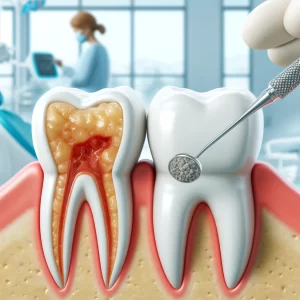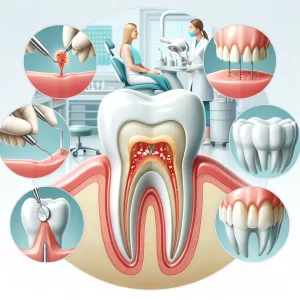Have you ever wondered how dental fillings work to mend our damaged teeth? Dental fillings are materials used by dentists to fill cavities after removing decay, thereby restoring the tooth’s integrity and function. They provide a protective barrier against further decay and help maintain the tooth’s structure.
Understanding Tooth Decay and Cavities

Tooth decay is a common health issue that affects individuals of all ages. It occurs when the enamel, the hard outer layer of the tooth, is damaged due to the buildup of plaque—a sticky film of bacteria. When these bacteria feed on the sugars in the food we eat, they produce acids that can erode the enamel and create tiny holes in the tooth, known as cavities. If left untreated, cavities can grow larger and affect deeper layers of the tooth, leading to more severe toothache, infection, and even tooth loss. The process of repairing these cavities is where dental fillings come into play.
Dental fillings restore the function of a decayed tooth. The dentist removes the decay, cleans the area, and fills the cavity to prevent further decay. The choice of filling material depends on the repair’s extent, location, and cost considerations. If you’re curious about the financial aspect of this dental procedure, you might wonder, How Much Does Dental Filling Cost Typically? Find Out the Great Value! The cost can vary widely depending on various factors, including the type of filling and your geographic location.
The Dental Fillings Work Procedure Explained

Dental fillings work as a common restorative treatment to repair teeth damaged by decay or trauma. The procedure starts with the dentist removing the decayed or damaged portion of the tooth and thoroughly cleaning the area to eliminate bacteria and debris. A filling material, chosen based on the tooth’s location and repair extent, is carefully applied to the cavity, shaped to match the tooth’s natural contours, and hardened, usually with a special light. This process restores the tooth’s structure and prevents further decay by sealing off spaces where bacteria could enter.
The entire dental fillings work procedure is designed to be minimally invasive and is typically completed within one dental visit, allowing patients to return to their daily activities promptly. While specifics can vary, the goal remains consistent: to restore the integrity and function of the affected tooth.
For those seeking to address their dental health needs, Affordable Fillings in Frederick can provide a solution that combines quality care with cost-effectiveness.
Types of Dental Filling Materials
Dentists use various materials for dental fillings, each with unique properties. Amalgam is durable and strong, used for over a century. Composite resins match natural teeth color for a discreet look. Gold fillings, though costly, offer durability and biocompatibility. Ceramic fillings are aesthetically pleasing and stain-resistant. Glass ionomer fillings release fluoride, aiding in decay prevention and often used in pediatric dentistry. The choice depends on the tooth’s location, decay extent, and patient needs.
Role of Fillings in Tooth Restoration
Dental fillings restore teeth compromised by decay. After removing the decayed material, a filling fills the cavity, restoring the tooth’s shape and function. This prevents further decay by sealing off areas where bacteria can enter. Fillings mimic the strength and durability of natural teeth, allowing normal chewing without discomfort. Professional dental practitioners ensure the structural integrity of the tooth during the filling process. For dental care, including fillings, in Frederick, Lee Family Dentistry offers professional services.
Aftercare for Dental Fillings
After a dental filling procedure, proper aftercare is crucial to ensure the longevity of the restoration and to maintain oral health. It generally involves allowing the filling to set fully and being mindful of the sensitivity that may be present in the affected tooth. Patients are usually advised to follow their dentist’s instructions regarding oral hygiene practices, eating habits, and follow-up visits to monitor the condition of the filling and surrounding tooth structure. Regular check-ups are important to assess the integrity of the filling and to address any potential issues early on.
Conclusion
If you’re ready to learn more about maintaining your dental health, call us at 301-662-0300 or read our reviews on Google Maps.

